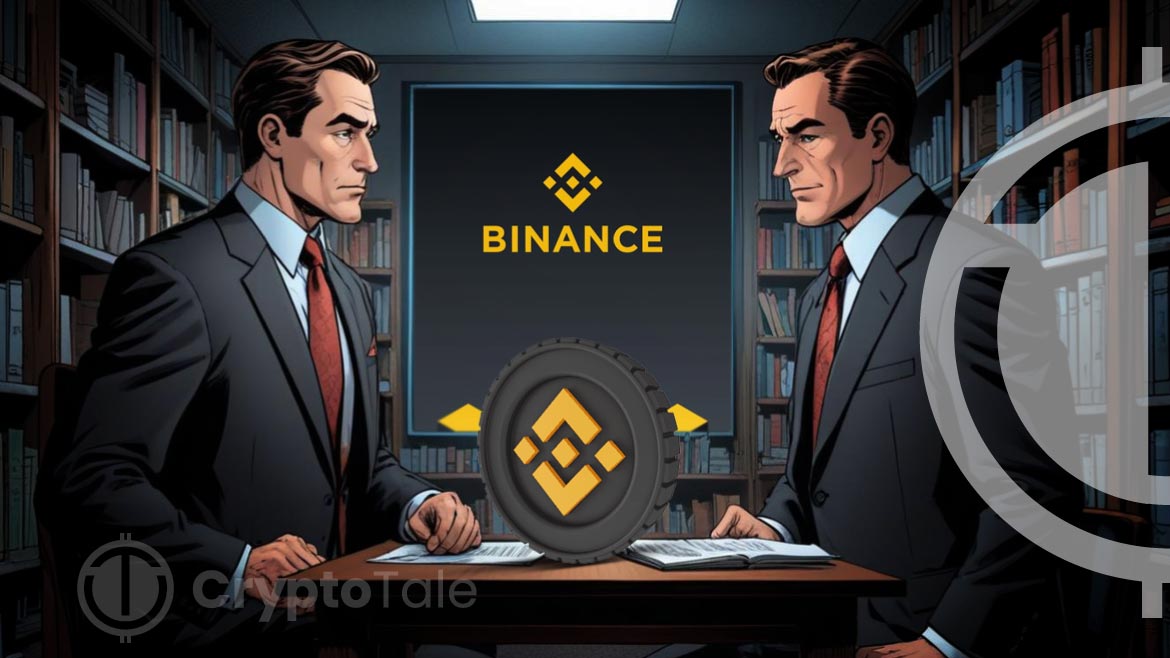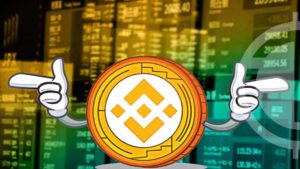
Binance Coin (BNB) stands as the fourth largest cryptocurrency in terms of market capitalization. It was considered a safe haven for investors due to its robust security features like state-of-the-art encryption, multi-factor authentication, and more. This article provides a detailed description of the Binance coin and its ecosystem.
What is Binance Coin (BNB)?
BNB is the native token of Binance, one of the largest cryptocurrency exchange platforms in the world, and has always been an integral part of the exchange. The coin was created as an ERC-20 token on the Ethereum blockchain and launched in July 2017 through an ICO offering. Furthermore, Binance regularly burns its coins to increase the value of the token.
In April 2019, BNB migrated from the Ethereum network to its own blockchain ecosystem, Binance Chain (BNB chain), which was later rebranded into BNB Beacon Chain. BNB is used as Binance’s utility token, meaning users can get discounts when using it to pay transaction fees on the exchange. With the development of BNB, Binance has integrated BNB into various aspects of its ecosystem, such as the Binance DEX, Binance Launchpad, and more. Other than Binance Chain, BNB is also the native currency of Binance Smart Chain (BSC).
What is Binance Smart Chain?
Binance Smart Chain (BSC) is an independent blockchain that runs parallel with the BNB Chain(BC). It was launched in September 2020 and designed as a high-performance blockchain capable of processing 100 transactions per second. BSC is compatible with Ethereum Virtual Machine (EVM), meaning it allows Ethereum-based smart contracts, tools, and dApps to run on its network.
BEP20 is the token standard for the Binance Smart Chain. This token standard is similar to the ERC-20 standard because BEP20 was inspired by it and shares many similarities, such as examining token ownership, returning the balance, and more.
BSC and BC operate alongside each other, allowing flawless transfers of assets between the two chains. Furthermore, users can move tokens from BSC to other blockchain platforms through Binance Bridge. It also offers lower transaction costs, making it more effective for users and developers.
The network uses a consensus mechanism called Proof of Staked Authority (PoSA), which is a mixture of Delegated Proof of Stake (DPoS) and Proof of Authority (PoA). In DPoS, stakeholders elect delegates to validate transactions and maintain the blockchain, and in POA, pre-approved validators are responsible for validating transactions. Furthermore, PoA is known for its ability to prevent 51% attacks and its tolerance for Byzantine attacks.
This mechanism enables faster block times of around 3 seconds and lower fees, making it ideal for applications requiring high speed and low cost, such as gaming platforms and decentralized exchanges.
Binance Coin (BNB) Shows Bullish Signs Despite Recent PullbackWhat is the BNB Beacon Chain?
BNB Beacon Chain was initially launched in April 2019 as Binance Chain; it was only in 2022 that it was rebranded as BNB Beacon Chain. It was designed to facilitate the operations of the Binance Decentralized Exchange (DEX) and high-speed trading. Moreover, it focuses on performance and security, ensuring efficient and reliable transaction processing. One of the chain’s key functionalities is governance, which allows BNB token holders to participate in the network’s governance by voting on decisions.
The BNB Beacon Chain’s token standard is BEP2. Unlike BEP20, the BEP2 token can only be used for transaction fees on the blockchain because it is not interoperable with other blockchains. Furthermore, since the token doesn’t work outside of Binance, BEP2 token holders will need to convert their tokens into BEP20 to use them on other decentralized applications.
The Binance Beacon Chain uses Byzantine Fault Tolerance (BFT) as its consensus mechanism. It is designed to provide high-speed consensus with finality, which means that once a block is confirmed and finalized, it cannot be altered. In this mechanism, validators take turns to propose new blocks, and the block will be committed when it receives more than two-thirds of the vote from validators.
It was designed to work alongside BSC (Binance Smart Chain), enabling seamless asset transfer between them. Additionally, developers, investors, and users can leverage the strengths of both chains for different use cases.
BNB Beacon Chain Shutdown
The BNB Chain team officially announced their plan to discontinue the BNB Beacon Chain and aim to transfer all its functionalities to the Binance Smart Chain. They call this process BNB Chain Fusion.
… there’s a strategic shift to migrate the Beacon Chain’s functionalities to BSC and retire the Beacon Chain. This move aims to streamline the network, improve efficiency, reduce security risks, and align BNB Chain’s architecture with the current technological demands and future growth.
The migration will occur in different stages. It officially started in April and will end in June 2024, and the months of January to March were used for preparation.
What is BNB Burn?
BNB uses a quarterly auto-burn mechanism to reduce its total supply to 100,000,000 BNB. Based on the price of BNB and the blocks generated on the BSC during the quarter, the auto-burn mechanism adjusts the amount of BNB to be burned.
B= N x 1000 / P+ K
Where,
P – Average Price of BNB
N – Total block Produced
K – Constant Price Anchor
Additionally, BNB uses a real-time burning mechanism based on gas fees. A fixed ratio of collected gas fees is burned in each block, and the ratio of burned gas fees is decided by BSC validators.
Does Binance Control or Own the BNB Chain?
Some people might be confused about the relationship between Binance and BNB Chain. They have a reason to be: Binance Chain was launched in 2019, and BSC in 2020. This might cause them to believe that BNB Chain is another one of the projects like Binance Launchpad, Binance Pay, and more.
However, the truth is that they are entirely different. Binance is a centralized exchange platform with a focus on serving the Web3 world, while BNB Chain is decentralized and independent.
$12.34M Worth PEPE Transfer to Binance Highlights Market Volatility and ActivityWhat Are The Advantages and Disadvantages of BNB?
Advantages
- When using BNB to pay for trading fees on the Binance exchange and its counterparts, users can get discounts.
- BNB holders can earn rewards by staking their tokens on BSC to become validators or by delegating their tokens.
- Binance regularly burns a certain amount of BNB tokens, reducing their supply and potentially increasing their value.
- BNB can be used across multiple blockchain platforms, allowing for the perfect transfer of assets.
Disadvantages
- BNB has a very close relationship with Binance, which could potentially raise concerns regarding centralization and its impact on its future.
- All cryptocurrencies face regulatory scrutiny, and any changes in regulations could impact their value. Furthermore, any changes in Binance due to regulatory pressure could also impact the value of BNB.
- BNB’s success is closely linked to Binance’s performance and reputation. Any issues Binance faces could potentially affect BNB’s performance.
Conclusion
Binance Coin (BNB) is a cryptocurrency that is important to the Binance ecosystem. It offers fee discounts, staking rewards, and more to users and developers. Originally, it was on the Ethereum blockchain, but it migrated to its own blockchain, which is split into Binance Smart Chain and BNB Beacon Chain. BSC is known for its compatibility with Ethereum and supports many DeFi applications. Although the BNB Beacon Chain is about to be discontinued, it has facilitated trading and governance. The planned BNB Chain Fusion is set to streamline operations and improve efficiency.













